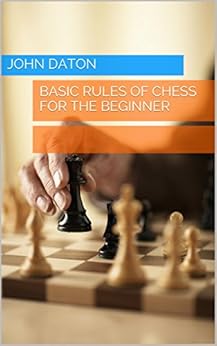Basic Rules Of Chess Pdf
CHESS FOR KIDS. How The Pieces Move. Title: chess-for-kids Author: Lindsay Created Date: 9/25/2009 2:40:41 PM. THE RULES OF CHESS Learning basic chess rules will help you build a strong foundation in chess. Many students do not have clear picture on these rules at their beginning stages. That is why I decided to help beginners with basic chess rules. Basic chess rules. Setting up the board: The board should be set up with the white square in the nearest row on the right, “white on the right”. If this isn’t done the king and queen will be mixed up. Shake hands across the board before the game starts. White always moves first.

Rules & Regulations- 7th edition, online- 6th edition. This is a good resource for all rules including Clock, Tiebreaks, Equipment, etc.(basic chess rules)(rev.
27, 2017)(Revised Jan. 2018)(Revised Jan. 2018)(from Michael Atkins)Rules specific to these National Scholastic Events are incorporated into the webpage we create for each event.
Official Rules Of Chess Pdf
When link is offered it will take you to those webpages. If no link is offered the webpages are not yet available:K-12/Collegiate(formerly National Girls Tournament of Champions (NGTOC).
Rules For Playing Chess Pdf
Setup: The board is setup as shown. There should always be a white square at the closest right-hand side for both players. Remember that the queen must be on a square that matches her color. Turns: White always moves first, and players alternate turns.
Players can only move one piece at a time, except when castling (explained later). Taking Pieces: Players take pieces when they encounter an opponent in their movement path. Only pawns take differently than they move (explained later). Players cannot take or move through their own pieces. Castling is the only move that allows two pieces to move during the same turn. During castling a king moves two spaces towards the rook that it will castle with, and the rook jumps to the other side. The king can castle to either side as long as: 1.
The king has not moved. The king is not in check. The king does not move through or into check. There are no pieces between the king and castling-side rook. The castling-side rook has not moved. It does not matter: A. If the king was in check, but is no longer.
If the rook can be attacked by an opponent's piece before castling. Dawn of war 2 chaos rising units. Putting an opponent's king in 'checkmate' is the only way to win the game. A king is in checkmate if it is in check, the opponent's piece that has the king in check cannot be captured, the check cannot be blocked, and the king cannot move to a square that is not under attack. In the illustration the white queen has the black king in check, and all of the spaces where the king can move can be attacked by the queen. The king cannot take the queen, because the knight is protecting the queen.
The black bishop cannot block the queen. This is checkmate. Chess is an incredibly complex strategic game, and it is impossible to go into all of the possible tactics one could use to win. However, I wanted to leave the new player with a few hints that will hopefully aid in victory. Piece Value: Obviously you want to protect your pieces from capture, but it helps to know which pieces are the strongest so you can decide who to save if you must choose between two. A good explanation of piece value is available on Queen: Strongest = Most Value Rook Bishop, Knight Pawn: Weakest = Least Value The bishop and the knight are commonly considered equal on the value scale, however many feel (myself included) that the bishop has a slight edge over the knight. Pawns become more valuable as they near promotion.
Pawn Promotion: Although a pawn can be promoted to a variety of pieces, the strongest choice is almost always to promote to queen. Board Control: When building defenses, remember to look at the board and gauge how strong you are in certain areas of the board. Try an keep power distributed fairly evenly, and bring pieces over to add strength if you see an attack coming. When attacking, it's a bad idea to let any of your pieces become cut off from your main force.
I find it helpful to have a support piece in mind when making an attack. Using pieces in tandem almost always yields a better result than using one piece alone.